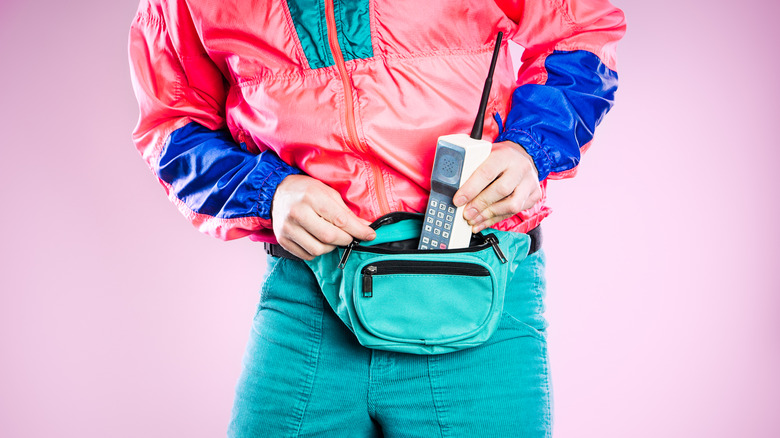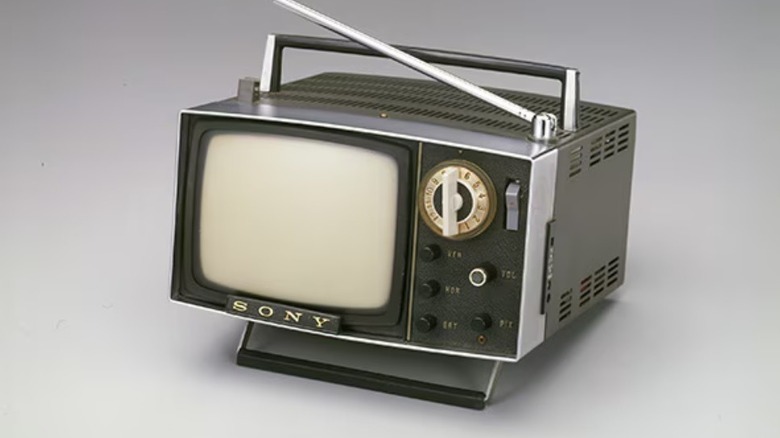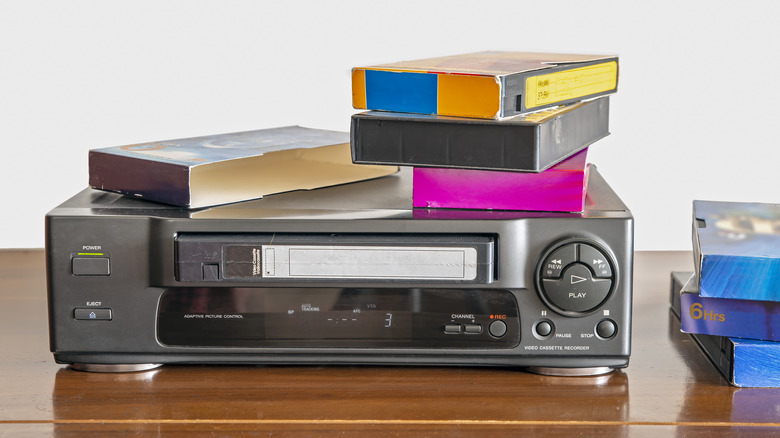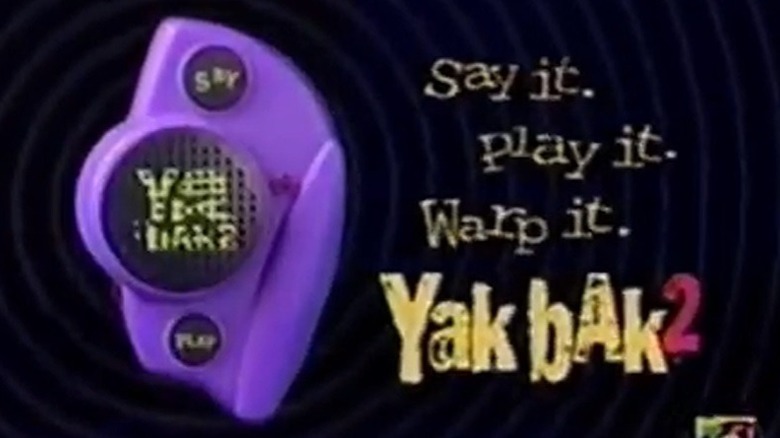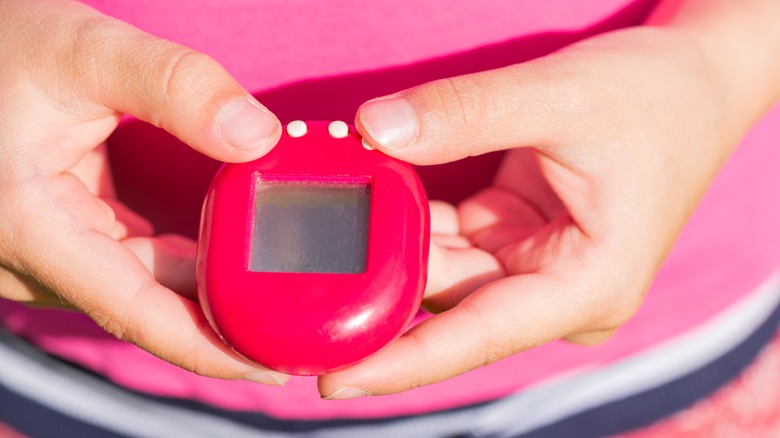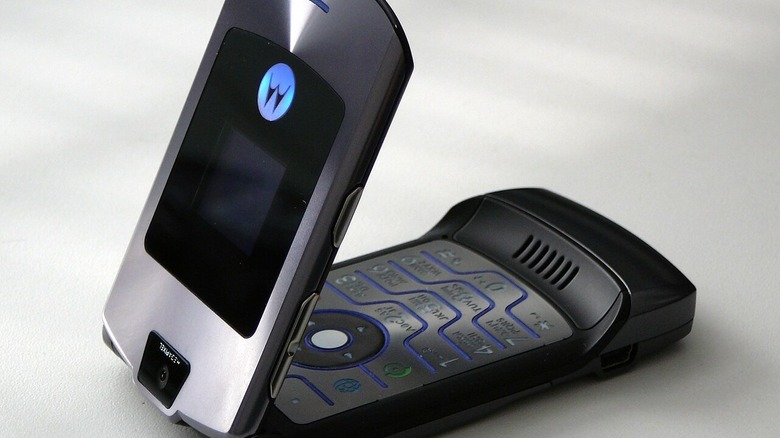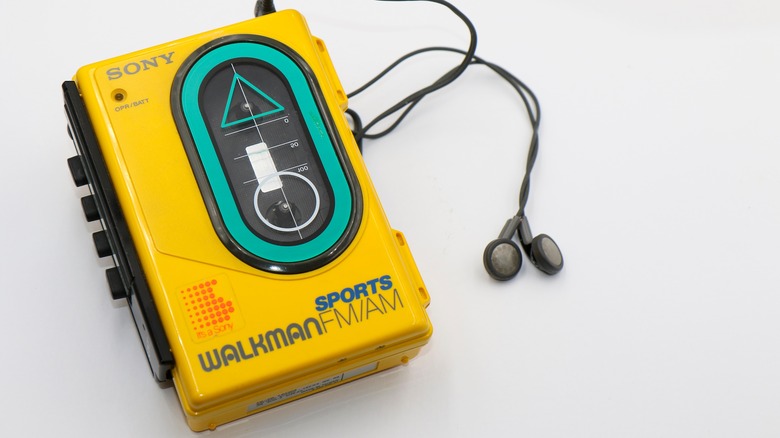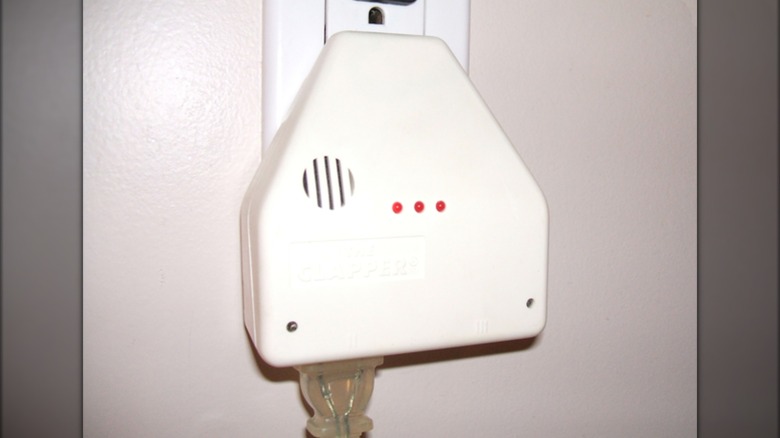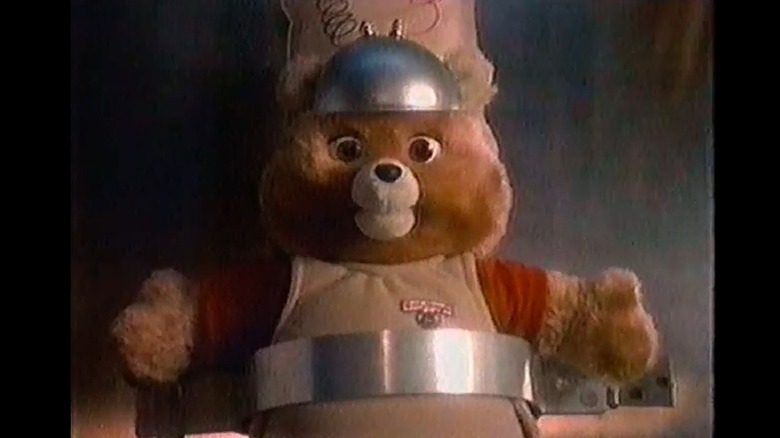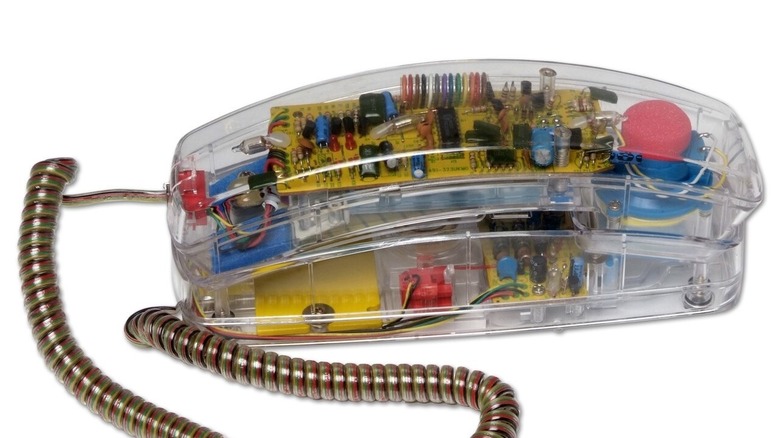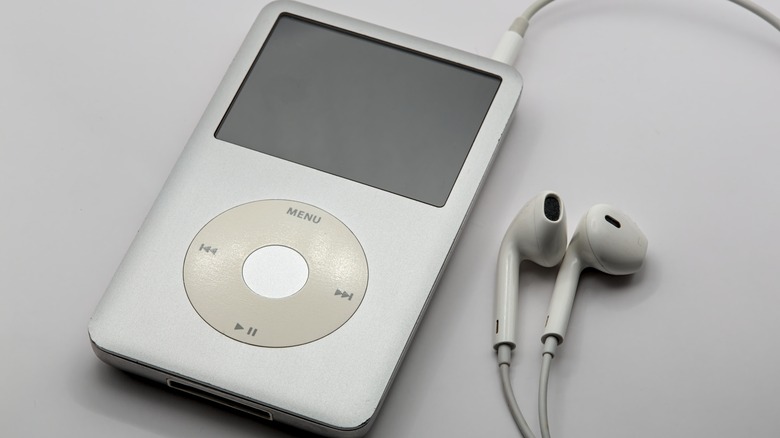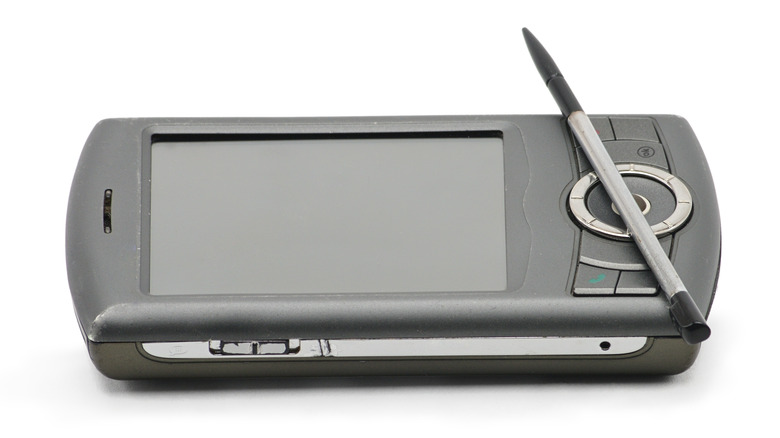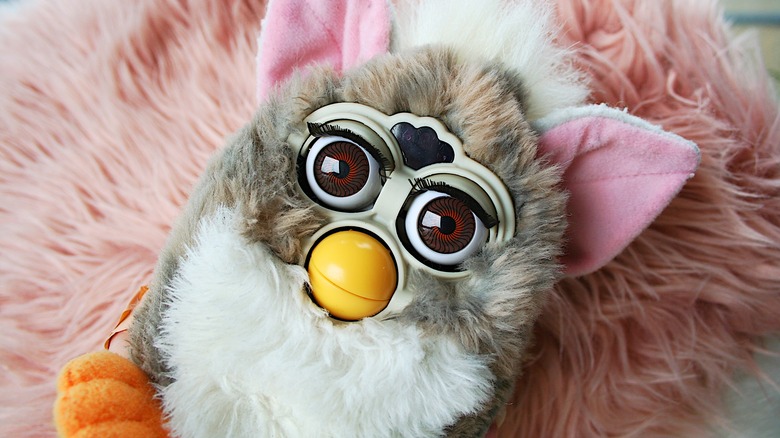12 Throwback Tech Products Surprisingly Cheap
We may receive a commission on purchases made from links.
When you're a kid, there's an unending rush of hot new toys and gadgets to play with. Every birthday, holiday, or celebration is a chance to get some new piece of tech you've never seen before. When you get a little older, you might start to long for the hot toys of yesteryear.
It feels like the last 10 years have been a nonstop wave of unprecedented circumstances. Seemingly every day there's some new historic event that rewrites the world as we know it. Consequently, nostalgia is at an all time high. It can be triggered by sights, smells, reminiscing, old objects, and more, leaving you with a strange combination of happy recollection and longing. An expansive study performed by the University of Southampton reveals that many people report an intense desire to return to a time and place that no longer exists.
It's been said that the past is a foreign country and that you can't go home again, but that hasn't stopped anyone from trying. While we might not be able to return to the past, we can try to rebuild it with these throwback gadgets from decades gone by.
CRT television
Today, most people have slim flat panel TVs which hang on the wall and are barely any wider than a framed picture, but not that long ago we were all sporting chunky CRTs. They take their name from their interior cathode-ray tubes which emit electron beams used to construct a moving image. The tubes are relatively long and stretch from front to back, which is why old CRTs were such bulky beasts. They are also known as vacuum tubes, because nearly all of the air inside has been removed to prevent electron scattering from ruining the image. In the 2000s flat panel displays became more affordable, increasingly popular, and eventually superseded CRTs.
In many cases, a modern TV really does provide a better viewing experience, but a CRT can't be beat for retro gaming or watching old movies. Visual content from the early 2000s or earlier was mostly designed with CRT displays in mind. That's why some of your favorite movies and games from your childhood don't look quite right when you watch and play them today. Not to mention that games like Nintendo's "Duck Hunt" rely on the specific technology of a CRT display and won't work without one.
They can go for a pretty penny depending on size and features (color versus black and white, built-in VHS or DVD player, etc.) but you can pick up an old CRT for under $50 on a secondary market like eBay.
VCR
Home video has gone through a few evolutions in recent decades. Streaming has largely supplanted physical media like Blu-ray, which grew out of DVDs, which themselves were a replacement for the VHS format. Along the way, the way we experienced home video changed.
Before DVDs introduced a digital component, allowing viewers to navigate menus and skip through scenes with a button push, everything was recorded on magnetic tape. You had no choice but to watch the advertisements and the previews, and you had to rewind the tape when you were finished or else suffer social consequences. In the '80s and '90s, even that was a technological marvel.
When televisions made their first incursion into the home, content was entirely broadcast. You could use a dial to flip through channels and watch whatever happened to be beaming over the air. The VCR allowed people to watch what they wanted when they wanted for the first time, by recording content for later playback. They could also, of course, play prerecorded tapes of popular movies and now you can watch your favorite movies in the least convenient and most nostalgic way possible.
Buying a newly manufactured VCR can set you back a couple hundred dollars, and many companies have discontinued production, but you can buy a vintage VCR for $20 to $40 on eBay.
Yak Bak
The youth of today are accustomed to making a record of everything they do and say. Every smartphone has a voice memo app and at least one camera, usually more. Modern kids have TikTok accounts and YouTube channels where they share their every thought and creation with the world, but in the old days the ability to record yourself was novel.
Its most iconic '90s-era representative was the Talkboy, a handheld voice recorder created for the movie "Home Alone 2: Lost in New York." Kevin McCallister (Macaulay Culkin) used it to facilitate some of his hotel hijinks in the Big Apple and the toy was later released for real-world kids to enjoy. Around the same time, Yes! Entertainment developed a line of simpler and more affordable voice recorders under the Yak Bak line.
The Yak Bak allowed kids to record a few seconds of audio and play it back later using internal storage instead of a cassette. Later Yak Bak models included sound effects and the ability to modify the pitch of a recording during playback. The company also made the slimmer and infinitely portable Yak Bak Power Penz, which mounted a working Yak Bak back to the top of a pen, as the name suggests. If you want to find a legitimate Talkboy on eBay, it'll set you back at least $100, but you can get your hands on a Yak Bak pen for about $20.
Tamagotchi (and other virtual pets)
In the late '90s kids everywhere were playing with Tamagotchis, Digimon, Giga Pets, and other virtual handheld pets. The Tamagotchi was first released in Japan November 23, 1996, and hit U.S. store shelves in May of the following year. Like an invasive species, they quickly spread throughout the population, popping up in pockets and backpacks of kids everywhere. To date, more than 90 million Tamagotchis have been sold.
The initial concept for the Tamagotchi was that it would be worn on the wrist, like a watch. As a result, the creators named their gadget after the Japanese words for egg (tamago) and watch (uotchi). Later, it was changed to the keychain design we're familiar with, but the egg shape remained with a small monochrome display and three buttons for interacting with your pet.
Interaction was limited but we cared about our little pocket friends, at least for a while. Unless you've been unusually vigilant, it's likely that the Tamagotchi from your youth is long gone and long dead, but you can try again. Tamagotchis have been rereleased and are available on store shelves for about $20 and you can get a vintage one on eBay for about $40. Of course, some '90s-era Tamagotchis are worth quite a bit more.
Flip phone
Smartphone evolution continues at a breakneck pace but modern cell phone innovations mostly happen inside the phone. While each year offers better cameras, faster processors, and a constant stream of new apps, the smartphone you buy next year is likely to look pretty much the same as the one you bought last year. Things were very different just a couple decades ago.
By the early 2000s cell phones had become relatively common but we hadn't yet settled on what they should look like, which meant it was a time when phone designers dared to dream. Before smartphones dominated the cell phone market, feature phones – what some people call dumb phones today — were locked in an arms race to become increasingly interactive and increasingly weird. We had phones that spun, rotated, and flipped. They had physical buttons, easily removable batteries, and low-resolution displays. If you were really lucky, there was a second smaller screen on the front cover when the phone was closed, so you could see who was calling.
There's something so satisfying about the tactile and sonic experience of flipping a phone open and closed and there's no better way to hang up in anger. Pressing a red symbol on a flat touch screen just isn't as effective. There are a wide range of old flip phones on the secondary market, including the famous Motorola RAZR, which you could find on eBay about $30.
Portable cassette player
In the modern world with its almost constant internet connectivity, streaming devices, and Bluetooth headphones, it's hard to imagine a world before private, personal music. Most of us walk around listening to our own private soundtracks, delivered seamlessly over the internet — but that wasn't possible just a few decades ago.
The invention of the Walkman allowed people to take their music with them and listen to it discreetly for the first time. It combined the functions of a portable cassette player with headphones in a package small enough to tote around comfortably. It's a combination that's so obvious in retrospect but was revolutionary at the time.
Sony's Walkman was quickly imitated and innovated, leading to similar devices from competing companies. Over time, the portable cassette player evolved along with the dominant music format, giving us the Discman and the MP3 player. Eventually, the portable cassette player was absorbed by the many functions of the smartphone but you can bring it back. The only thing stopping you from returning to an era of mixtapes is about $20 on eBay and the will to make it happen.
The Clapper
Clap on, clap off, the Clapper! One poorly produced TV spot, an engaging gadget, and one of the most memorable jingles of all time were all it took to launch the Clapper into the hearts and minds of people everywhere. First released in 1984, the Clapper is a sound-activated switch capable of activating or deactivating up to two electrical appliances.
To use the Clapper, just plug it into your electrical outlet and then plug your chosen appliances into the Clapper. Each of its ports is designed to trigger when the device hears either two or three claps. An interior microphone mounted at the front of the device listens for any nearby sounds and sends them to a filter. That filter is looking for certain frequencies which are likely to be claps, while ignoring everything outside that range. Then it determines whether there were two or three claps and triggers the appropriate appliance.
Of course, it's not a perfect system. As a result of when and how the Clapper was designed, it sometimes mistakes non-clap noises (like dog barks) for claps, and sometimes it doesn't register actual claps if they are too quiet or delivered at the wrong speed. The Clapper was one of the first attempts to give consumers hands-free control over their homes and it worked well enough that they are still being made today. Turn the lights off the way grandma used to with your very own Clapper for the low price of about $20 on Amazon.
Teddy Ruxpin
Teddy Ruxpin was an alien creature called an Illiop, who only looked like a teddy bear. The character started out as a plush toy with moving parts and electronic components invented by Ken Forsse and distributed by Worlds of Wonder. Hidden within his adorable exterior were a cassette player, a speaker, and a few motors for controlling the movement of the eyes and mouth. Kids could slide a cassette tape into his back and read along as Teddy told them stories about his adventures.
Ordinary cassettes have two tracks, a right and a left, allowing them to produce stereo audio. Teddy Ruxpin tapes kept the audio on the right track and used the left track for control data which told the ears and mouth how to move. Teddy Ruxpin hit store shelves in 1985 and it was such a hit that an animated series, "The Adventures of Teddy Ruxpin," was quickly produced to expand on the mythos of Teddy and his best friend Grubby as they explore their alien world and learn valuable lessons along the way.
Updated versions of the toy have been produced over the years but they just don't make Teddy Ruxpin like they used to. You can get an original all your own for about $50 on eBay.
Transparent landline
When you call someone on a cell phone, your voice gets converted to an electrical signal, then translated to a radio wave which goes to a cell tower. Then the process reverses itself from a radio wave, back to an electrical signal, and finally to sound waves on the other end.
By contrast, old landline phones maintain a more direct physical connection from end to end. When you talk into a landline, the sound waves are converted to electrical energy which travels along physical phone lines to its destination, where it's converted back into sound. The whole thing relied on a complex and sprawling network of telephone cables connecting city to city and house to house.
Before cellular technology put a mobile phone in everyone's pocket, people usually had a single phone number for their house. If you wanted to talk to your friends, you had to call someone's house and ask to speak with them. Phones either sat on cradles on counters and tabletops or were mounted to the wall and wired directly to a phone jack. If you were lucky, your phone was cordless, otherwise you had to lean against the wall and twirl your fingers in the cord while you talked. The very coolest phones of the '80s and '90s had transparent cases, letting you see the inner workings. Make a phone call like it's pre-Y2K with a transparent landline for about $25 on eBay.
iPod or MP3 Player
The iPod changed the music game when it first hit store shelves in 2001. Even its comparatively small storage capacity meant it could carry dozens of albums in a package small enough to fit in your pocket. With the help of a compelling advertising campaign, the iPod became the hottest gadget of the new millennium and helped revive the Apple brand. The first incarnation of the iPod could hold up to 1,000 songs and play for 10 hours straight. You could also recharge it, which was novel in a world where portable cassette and CD players depended on single-use batteries.
When the iPod was new, people happily handed over hundreds of dollars for an iPod, but today you can get your hands on one from eBay for under $50. As is often the case with vintage tech, the older and less advanced models are among the most expensive because there are fewer of them and they carry maximum nostalgia value.
The iPod evolved quite a bit throughout the line's lifetime and a wide range of competitors cropped up offering their own take on portable digital music. As a result, there are plenty of different iPods to choose from and if brand isn't a factor, you can find MP3 players from a variety of lesser known companies for $10 or less.
Palm computers
In the late '90s and '00s Palm was one of the biggest names in mobile computing. Their Personal Digital Assistant (PDA) devices were a staple among working professionals, allowing users to take notes, keep a calendar, manage contacts, and a lot more, while on the go.
Palm mobile computers, originally called Palm Pilots, were designed and manufactured by Palm Inc. They were among the first commonly available portable computers, setting the stage for and eventually being overtaken by the smartphone. Like a smartphone, Palm devices featured a touch screen interface and access to a variety of applications.
Users navigated through Palm OS using a stylus to access preinstalled applications and take notes. The Palm could connect and sync to a computer to share data or install additional applications including some rudimentary games. Instead of a physical or virtual keyboard, writing was achieved through handwriting recognition, but you had to write characters in a specific way for the Graffiti software to recognize it. Palm Inc. is now defunct and some of the Palm functions are no longer supported, but a Palm pocket computer could be a fun and affordable – they go for about $30 on eBay – way for vintage tech fans to keep track of basic information like it's 1996.
Furby
Originally released in 1998, the Furby was the must have toy of that year's holiday season. In its original form, the Furby looked an awful lot like a mogwai, the adorable juvenile stage of the creatures from 1984's "Gremlins," and they were just as mischievous. A few motors, some audio capabilities, and a cute exterior were all it took to take the toy market by storm and foster a few conspiracy theories at the same time.
Furbies were programmed with the illusion of awareness. It's what made them one of the first successful consumer robots. Out of the box, Furbies were programed to speak only the fictional language of Furbish. Over time, they would slowly transition from Furbish to English, or one of 13 other languages, depending on the preferences of the user. It gave the impression that your Furby was learning to speak the same way a human baby would and that it was listening to you. It seems silly now, but there was a non-zero amount of anxiety over whether Furbies could be trusted.
In any case, the Furby became one of the most successful toys of the late '90s and it's still around today. Furbies have gone through a few design changes, most recently in 2023. You could pick up a brand new Furby for $70 directly from Hasbro or you could relive Furby Mania with a Furby that's old enough to rent a car for half that price on eBay.
